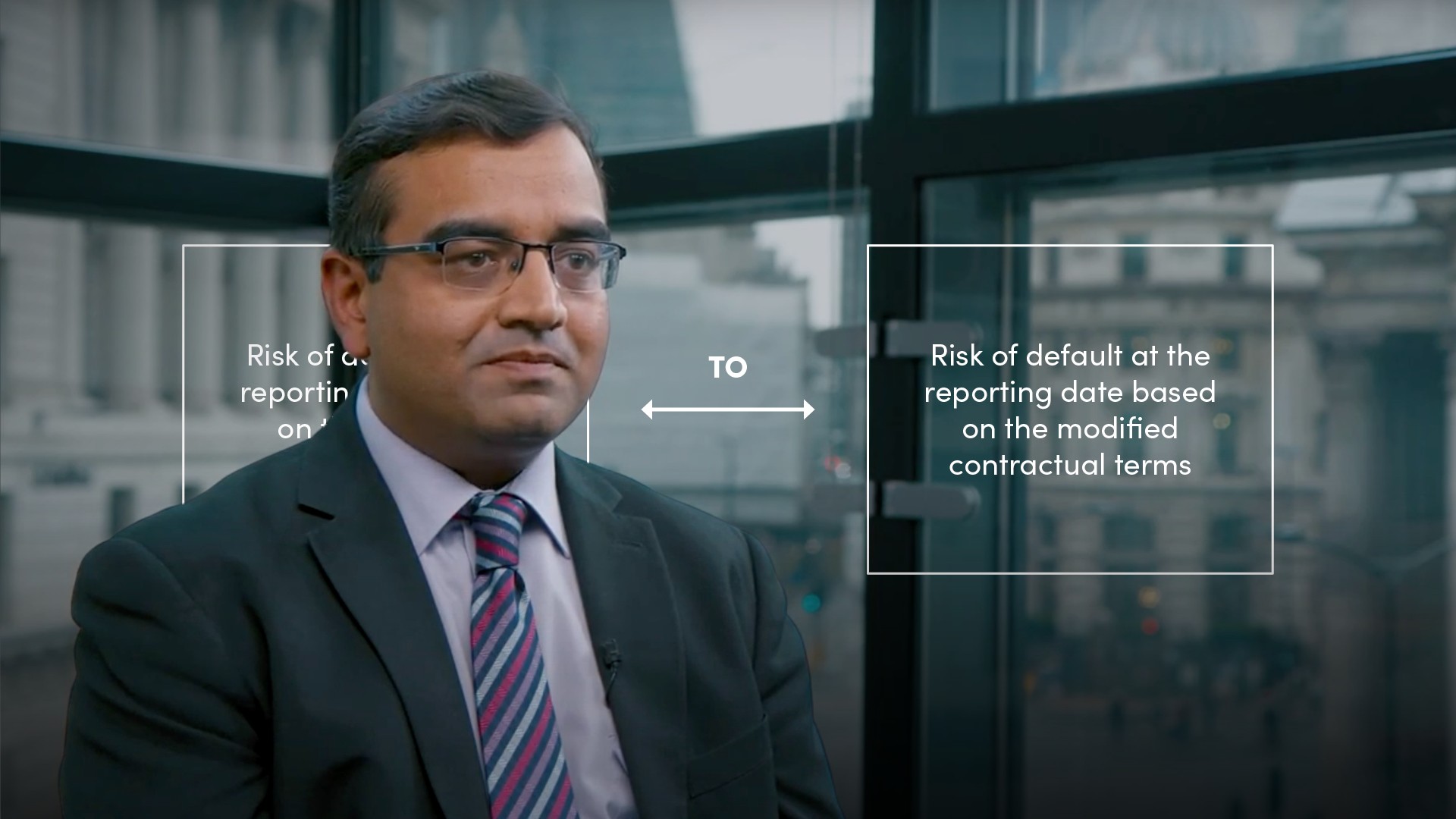
IFRS 9 Measuring Expected Credit Loss

Saket Modi
20 years: Chartered accountant & educator
In this video, Saket gives an overview of the expected credit loss model and three different approaches to assessing impairment.
In this video, Saket gives an overview of the expected credit loss model and three different approaches to assessing impairment.
Subscribe to watch
Access this and all of the content on our platform by signing up for a 7-day free trial.

IFRS 9 Measuring Expected Credit Loss
17 mins 19 secs
Key learning objectives:
What is the scope of IFRS 9 impairment?
Identify and explain the general, simplified and credit-impaired approaches
What indicators does IFRS 9 use to track significant increases in credit risk and default?
Discuss the reporting rules for loan commitments and financial guarantees
Overview:
In this video, Saket introduces the three key approaches to assessing the expected credit loss - the first is the general approach, which requires an entity to track changes in credit risk, the second is the simplified approach, which does not require an entity to track the changes, but rather requires the entity to recognise a loss allowance based on lifetime expected credit losses at each reporting date from obligation, and lastly the purchased/originated credit impaired approach.
Subscribe to watch
Access this and all of the content on our platform by signing up for a 7-day free trial.
What is the scope of IFRS 9 impairment?
- Debt instruments at amortised cost or fair value through other comprehensive income, including trade receivables
- Loan commitments and financial guarantee contracts not measured at fair value through profit or loss
- Contract assets under IFRS 15 from contracts with customers and lease receivables under IFRS 16 leases
What are expected credit losses, and how do we calculate its value?
- The expected credit losses are the present value of all cash shortfalls over the expected life of the financial instrument
- Expected credit loss = Exposure at default x Loss given default x Probability of default
What is the first stage of the general approach?
- Financial instruments are recognised in Stage 1 on initial recognition, and subsequently until there is a significant increase in credit risk
- Also includes financial instruments that are considered to be low credit risk
- The impairment allowance on financial instruments in Stage 1 is based on 12-month expected credit losses, and adjusted in every period for changes in the risk of default
- The interest income on financial assets is calculated by applying the original effective interest rate to the gross carrying amount of the financial instrument
What does the second stage of the general approach consist of?
- Financial instruments are transferred from Stage 1 to Stage 2 if an entity concludes that there is a significant increase in credit risk since initial recognition
- The impairment allowance on financial instruments in Stage 2 is based on lifetime expected credit losses
- Collateral value must be considered in measurement of expected credit losses
- The interest income on financial assets is calculated by applying the original effective interest rate to the gross carrying amount of the financial instrument
What is the third stage of the general approach?
- Instruments are transferred to Stage 3 if they are credit-impaired or in default
- The impairment allowance on financial instruments in Stage 3 is based on lifetime expected credit losses
- The interest income on financial assets is calculated by applying the original effective interest rate to the net carrying amount of the financial instrument after impairment allowance
What indicators does IFRS 9 use to track significant increases in credit risk and default?
- Borrower specific factors - Adverse changes in the expected performance and behaviour of the borrower, or a decrease in the value of the collateral supporting the obligation
- Macroeconomic factors - GDP, interest rates, unemployment rates, real-estate index
- Internal and external factors - This includes:
- Changes in the internal price indicators of credit risk
- Close monitoring of the exposure compared to what was done previously by the entity’s credit risk team
- Actual or expected internal credit rating downgrade for the borrower
- Significant increases in credit risk on other financial instruments of the same borrower
- Actual or expected change in the financial instrument’s external credit rating
- Actual or expected adverse change in the regulatory, economic or technological environment of the borrower
If a financial asset has been modified, does the asset quality for derecognition?
- If old financial asset is derecognised and the new asset is recognised, then at the next reporting date, compare risk of default at the reporting date based on the modified contractual terms with the risk of default at original recognition which is the date of modification
- If the modification does not result in the derecognition, then at the next reporting date, assess whether there has been a significant increase or decrease in credit risk
What is the credit loss for undrawn loan commitments?
Credit loss = PV(Contractual cash flows - Cash flows)
What is the maximum period to consider for loan commitments?
The contractual period over which an entity has a present contractual obligation to extend credit. The expected credit losses are measured beyond the contractual period during which the entity is exposed to credit risk and would not be mitigated by credit risk management actions.
For a financial guarantee contract, when is the entity required to make payments?
- Only in the event of default by the debtor in accordance with the terms of the instrument that is guaranteed. The maximum period to consider is the contractual period over which an entity has a present obligation to extend credit
- If the asset is fully guaranteed, the estimation of cash shortfalls would be consistent with the estimations of cash shortfalls for the asset subject to the guarantee
When is an entity required to apply the simplified approach?
For trade receivables or contract assets that result from transactions within the scope of IFRS 15 Revenue from Contracts with Customers and that do not contain a significant financing component. Entities that do not have sophisticated credit risk management systems can adopt the simplified approach so they do not have to track changes in credit risk.
When is a financial asset recognised as credit-impaired?
When one or more loss events that have an adverse impact on the estimated future cash flows of that financial asset have occurred.
How are entities required to recognise changes in expected credit losses?
As an impairment gain or loss. An impairment gain is recognised if favourable changes result in the lifetime expected credit losses estimate becoming lower than the original estimate that was incorporated in the estimated cash flows on initial recognition when calculating the credit-adjusted effective interest rate.
Subscribe to watch
Access this and all of the content on our platform by signing up for a 7-day free trial.

Saket Modi
There are no available Videos from "Saket Modi"



























